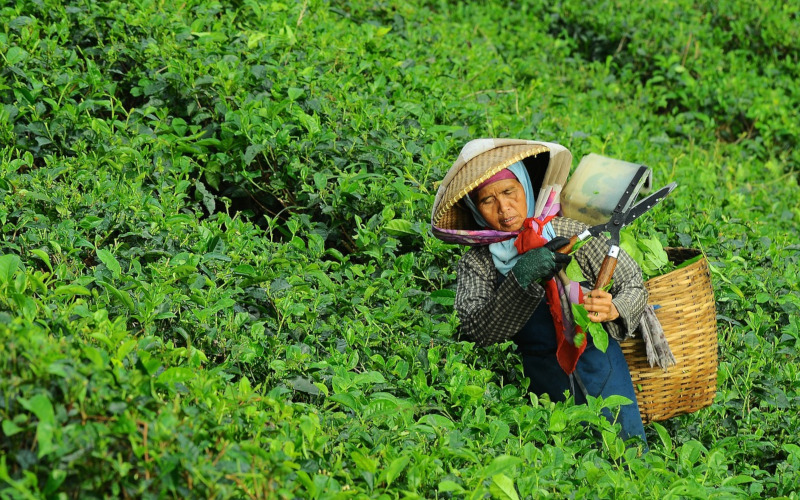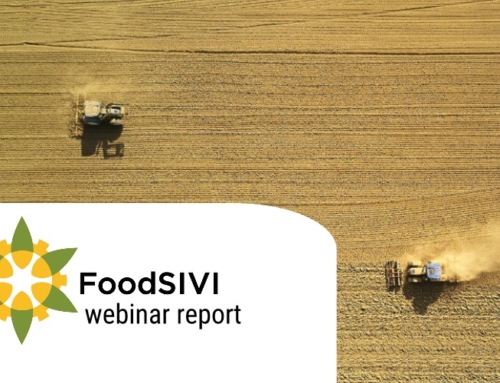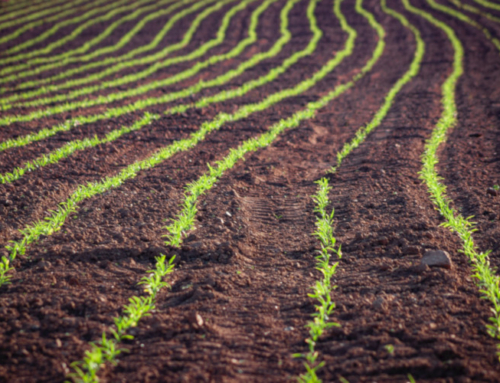Equity in the food system and multi-capital accounting
The global footprint of the food system on planet and people is huge. It is estimated to cause 30% of annual CO2-equivalent emissions; 70% of water use, use 50% of the world’s habitable land, and over 50% of synthetic nitrogen production and phosphorous use. Meanwhile, 66% of the 740 million people living in extreme poverty globally are agricultural workers – with 60% of all child labour as classified by the International labour Organisation (ILO) in agriculture. Globally, 33% of adults are obese while 12% of the global population are hungry and many more are undernourished.
There is a large global disparity between who receives the benefits of the production, manufacturing and retail which incurs this footprint, and who pays the costs. Inequity is one of the primary societal risks generated by the food system and omitted in prominent corporate tools aiming to account for the impact of the food sector on planet and people.
Capital flows are increasing from poor to rich in the food system
Globally the amount of capital flowing from poor countries to rich countries is ten times greater than the amount of aid in the other direction. Foreign direct investment enriches commodity dependent developing countries, which for most poor countries means those with large agricultural and mining sectors, increasingly less than the profit flowing back to parent companies in developed countries. Financial capital accumulates in rich countries. Within countries, wealth accumulates in increasing higher income brackets, and since 1980 the share of income held by the top 1% has doubled in English speaking countries with the richest 22 men in the world owning more wealth than all the women in Africa according to Oxfam. At the same time, even as affordability and availability increases for higher income brackets, there is a rise in indicators of social cost such as food insecurity in developing and developed countries. Shocks such as the current COVID-19 pandemic are compounding costs to the poor and reinforcing inequality.
The evidence is that, unsurprisingly, alongside financial capital, many of the natural and social capital benefits also accumulate in rich countries and demographics with costs borne by poorer ones. The food system is a massive driver of inequity and replete with inequitable exchanges of natural, human and social capital alongside physical and financial flows, as described in the TEEB Agrifood Scientific and Economic Foundations report.
Economic risks and costs of inequity
In a deeply unequal world, with levels of income inequality not see in some of the world’s largest economies since before the world wars, the potential future costs from social unrest, corruption, political instability, institutional failure, and diminished health, productivity and social mobility, loom over a future already clouded by climate change and biodiversity loss. The mean GDP-depressing effects of inequality are known – malnutrition from low paid agricultural workers is estimated to be depressing 2% of the GDP of low income countries. However, like climate change, the societal risks may be far greater.
Inequity, malnutrition in the form of undernutrition and obesity and type II diabetes, and climate change and biodiversity loss, translate into the three greatest economic impacts of the food system. The compounding effects they have on each other implies a distribution skewed heavily toward higher than projected future impacts and costs. If the future goes wrong for present and coming generations, the chances are it goes seriously wrong.
Inequity, in addition to magnifying environmental and social shocks and stresses through exposure of critical, but vulnerable, components of the food system, entrenches an inability to counter vested but people and planet-wrecking interests. Inertia in economic and political systems to responding and realigning in the face of present and future environmental and social shocks and stresses dangerously compounds their risk.
Inequality impacts organisational performance including business productivity losses. Traditional price and supply risks are likely to become more prominent. The Ivory Coast and Ghana, which produce more than 60% of the world’s cocoa, are looking to co-ordinate on cocoa pricing, citing injustice as the reason for the new cartel. This could disrupt global supply or put investments in the Ivory Coast and Ghana at risk.
On the other hand, opportunities exist in a more equitable food system. For the decades ahead, the poorest countries will continue to rely on agricultural production, with a significant opportunity to establish infrastructure to support sustainable production. There is also a large potential for growth in value-adding, in both economic and nutritional terms, by small and medium enterprise (SME) manufacturing in developing countries.
Correcting a sector driving inequity
The dominant business model for over half a century, and what the executives of the food sector have been rewarded for, is internalising benefits provided to society into business revenue and externalising business costs to society. The food system acts akin to a Carnot engine pumping out impact as capital flows from poorer to richer stocks. The differential in this engine has been increasing, the most impactful commodities and services are mostly those with higher value and with the highest potential for value-add in processing and retail in advanced economies.
The food sector is now the most impactful sector on environment and health on the planet. The clearest evidence of the distance between power and impact in the food system is that direct risks to the market have not been sufficient to prevent this. Climate change impacts will ramp up in the future, noncommunicable diseases occur decades away from the point of consumption and market transaction, and many aspects of these impacts and others occur in the marginalised workers and consumers of the world. Impacts accumulating temporally, or demographically through inequity, at a distance from the power to correct them has produced a dangerous lack of feedback.
The accumulation of societal risks with few direct dependencies exposes the portfolios of financers, investors, reinsurers, and governments more than consumers. Food consumers statistically place retail price far above ethical considerations. While consumers remain sporadic correctors of the food sector, the oversight and compliance that could be driven by the capital-at-risk of investors, insurers and governments with wider societal exposure has the potential to be a larger, and more consistence, force for economic correction of the food sector. Ethical labels are a form of accounting of fairness and equity. However, they are aimed at consumers, are topically driven rather than based on analysis of the effectiveness of global reduction of food system impact, and face less scrutiny compared to financial accounts.
A failure of accounting
In response to the realisation of mounting effects on planet and people, and pressure from investors, the corporate sector has developed multi-capital accounting to report on a company’s impact on natural, social and human capital. Several of the world’s largest companies, including the food company Olam International, and accounting firms (e.g. KPMG, Deloitte, EY, PwC), produce – or sell services to produce –integrated reports and non-financial annual statements.
While acknowledgement of natural, social, and human capital impacts is positive, current attempts by the business community do not capture equity concerns in capital exchanges. Given the position of the food sector as a driver of global inequity, and the role inequity plays in the inability of the sector to correct the accumulation of impact, the omission of detail on equity is highly conspicuous, and one which jeopardises the legitimacy of impact reporting for the sector.
Present business approaches to impact valuation offset negative amounts, of costs from e.g. natural capital loss with positive amounts of benefits from e.g. social capital gain without considering substitutability of capital. This is a flawed approach to non-financial accounting. In financial accounting the issue does not arise, as money is taken as a complete account of value in the substitution of a capital loss for a capital gain.
These present approaches separate out net environmental costs and net social benefits before calculating totals. However, there is normally little or no indication of where and to whom the main environmental costs are incurred versus where and to whom the main social benefits occur. It remains unexplained in present methodology why or how natural capital negative externalities in a developing country for instance, are offset by social capital positive externalities in a developed country.
Impact investors should take note of this lack of explanation and estimation. Without understanding where costs and benefits are incurred the change in impact is unknown, despite a ‘total value’ indicating positive impact. The negative impacts may still be occurring where marginal impacts are exacerbating already accumulated capital loss. The positive impacts are still occurring where social and private improvements marginally enrich a society already rich in social and human capital. Only on paper have the negative and the positive cancelled each other, and only on paper are planet and people less worse off.
Better accounting should indicate the degree to which social benefits occur in the same community experiencing natural costs, which offers the possibility that some benefits offset some costs. The accounting should indicate if there is a considerable distance between the costs and benefits and substitutability of capital becomes much less clear. In theory this could apply to all non-financial capital exchanges, between national and subnational economies separated by socio-economic, cultural, legal, racial, gender, spatial, and temporal dimensions. In practice, a financial reporting community genuinely embracing a ‘multi-capital approach’ should be able to track the ‘trades’ in different capital classes linked to the largest inequities.
A way forward for reporting equity
The “Valuing the Impact of Food” report published by the Food System Impact Valuation Initiative argued for a spatially, contextually, and temporally explicit model of food system activities linked to sources and receivers of positive and negative impacts. The model suggested leveraging the existing data and resolution behind biophysically based agriculture and trade models developed by IIASA, PIK and IFPRI. The mentioned food system models are already extending their coverage to include spatially explicit estimates of externalities such as carbon and nutrient emissions. The resolution suggested in the report is at a practical level so that companies can disclose the footprints incurred in food sector activities. Matching such disclosures to the model enables quantitative statistics to be generated for the value of the capital exchanges in a company’s activities and value chain.
These statistics are quantitative measures of inequity. They measure distance between capital gains and losses across four dimensions:
The first statistic, called the socio-economic spatial (SES) statistic, reflects capital exchanges crossing national economies and levels of socio-economic development.
As an example, if the social benefits of a given food system activity were mostly accruing in the same communities experiencing health costs due to that activity, the SES statistic would be low. On the other hand, if social capital benefits were mostly accruing in developed nations while natural capital costs accrue in developing nations, the SES statistic would be high. If, however, capital loss occurs in a national economy more able to bear it, such as social capital losses occurs in a richer country in exchange for preservation of critical natural capital in a developing country, the SES statistic would be low.
The second statistic is a refinement of the SES statistic, called SES-GR. It relates disparity in the gender and race of receivers of positive impacts compared to receivers of negative impacts within and across countries.
The third statistic, called the socio-economic temporal (SET) statistic, reflects capital exchanges crossing generations. If social capital benefits were mostly accruing in the present time while natural capital costs from present activity accrue at later times, then the SET statistic would be high. The “Valuing the Impact of Food” report highlights, besides climate impacts, intergenerational effects of obesity and poverty due to the food system.
The fourth statistic, called the capital exchange risk (CER) statistic, will measure the volatility of benefits compared to costs. It can reflect where more certain costs are exchanged for uncertain benefits. Future benefits are not always realised, for example corporate social initiatives and new infrastructure that is not delivered to communities, while present natural costs such as water pollution are usually directly observed and incurred with certainty.
The CER statistic can also reflect when the benefits to advantaged demographics have low volatility, while disadvantaged actors face volatile costs. Relatively constant food prices in western supermarkets during the 2007/2008 food price crises, are an example, while poorer or exposed demographics in the same value chain faced highly uncertain costs such as volatile agricultural yields from climate driven extreme weather and volatile labour and input costs from social unrest and geopolitical responses. With this focus the CER statistic is a measure of perverse risk sharing in food value chains. Food value chains without appropriate risk sharing will fail to be resilient.
The statistics are not independent. If social capital benefits were mostly accruing in a distant future time from natural capital costs incurred now, then the SET and CER statistics would both be high.
Conclusion
The food system is the number 2 global contributor to climate change, the number 1 global contributor to biodiversity loss, is the number 1 global contributor to preventable disease and death due to malnutrition in all forms, involves the number 1 manufacturing sector across many advanced economies, and involves the number 1 livelihood of the world’s poor. Due to its impacts and the GDP depressing costs of those impacts, the food sector stands at the gate to two very different global social and economic futures for people and planet. The overall response of the sector, to market and societal forces, will either make, or break, achievement of the SDGs.
If multi-capital accounting continues to gain traction, tracking capital exchanges at the practical resolution suggested would offer a powerful tool for food sector companies and investors to gain insights into impact, risk, and inequity. It would also provide tangible and standardised bolts on which to attach public fiscal and regulatory measures to transform the sector, leading to further opportunities and incentives for companies.
Equity statistics would address a glaring gap in multi-capital accounting and increase assurance to impact investors that investments are contributing toward food system transformation targets with the least social harm and reducing capital risks. Without equity accounting and statistics, multi-capital accounting risks being the old wine of corporate responsibility in a new bottle.
By Steven Lord and John Ingram. This blog is a longer version of a WBCSD blog at https://www.wbcsd.org/Programs/Food-and-Nature/Food-Land-Use/FReSH/News/Multi-capital-accounting-is-in-the-red-when-it-comes-to-equity-in-the-food-system.
FoodSIVI is hosting a webinar on costing the impact of food on 21 September 2020.





